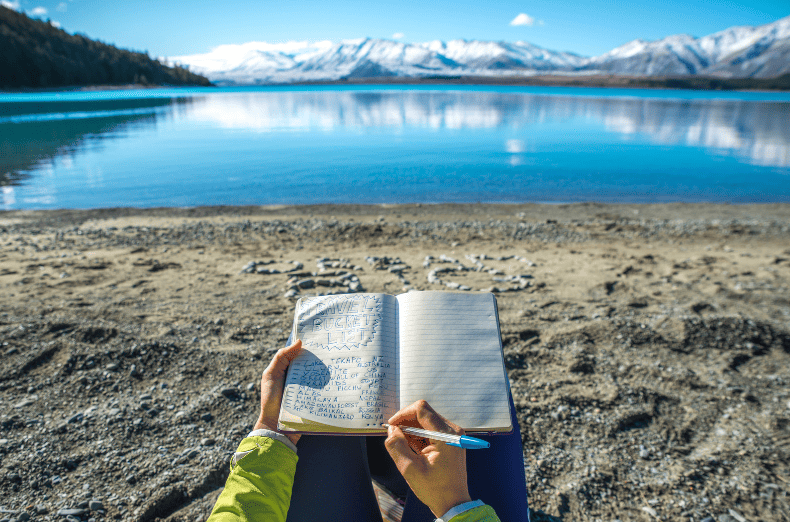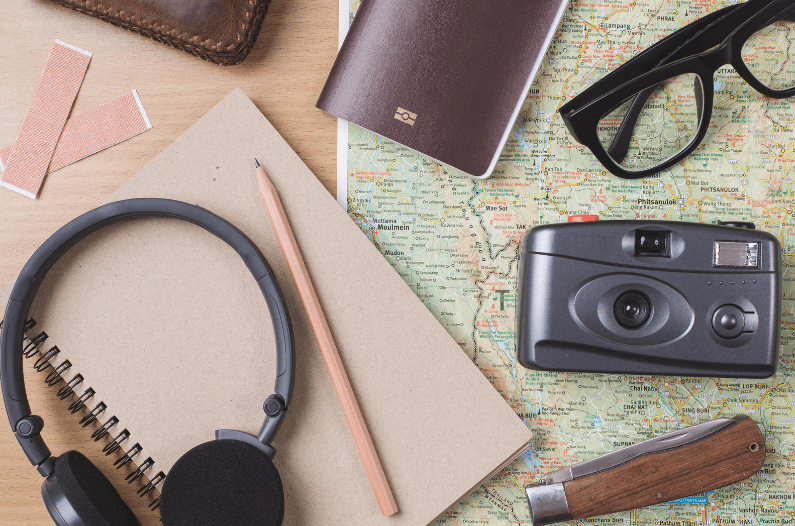The Moleskine notebook is an iconic tool for recording moments of inspiration. Historically, many renowned figures, including travel writer Bruce Chatwin, have used this type of notebook to capture their ideas. As dedicated travel journalists, it’s essential for us to maintain our own travel journal to document all the details of our journeys chronologically. This practice ensures we can recall every action and event accurately, enabling us to create content rich in detail.
Journaling is a highly recommended habit. Beyond fostering professional growth and aiding our work, it allows us to articulate our innermost thoughts and feelings. Developing the ability to express our emotions, sensations, and opinions in writing is one of the many skills enhanced by journaling. Additionally, it helps us collect all necessary field information, which we can later transform into compelling content as travel communication professionals.
What Is a Logbook and What Is It Used For?
A logbook is a notebook or travel diary used to maintain a written record of actions and events during a trip or over a specific period of time. It is characterized by its chronological documentation of everything that occurs throughout the journey. This systematic recording ensures that, upon returning home and beginning the process of content creation, we can efficiently review all the noted information.
The travel diary serves as a valuable written complement to photographs, videos, and audio recordings. In this notebook, we can include all the contextual information needed to recall the details of the trip. For example, we can jot down key information about a museum or noteworthy insights shared by our guide during a tour.

How to Make a Travel Journal?
A logbook is a collection of information where we can also document the sensations we experience throughout the trip. Details such as feelings, colors, and smells enrich the content of our travel diary. This deeper, more sentimental information complements factual or numerical data, adding a personal touch that reflects our authenticity.
Important considerations for writing a travel diary:
- Write daily and promptly, capturing events as they happen. Avoid allowing too much time to pass between observation and note-taking.
- Record your feelings and anything that captures your attention.
- Use these notes as raw material for future publications.
- Document all types of information and sensations during guided tours, interviews, or while observing everyday scenes.
Tips for Making a Travel Journal
These are some of the recommendations to keep in mind so that there is no lack of information in our travel notebook and to have everything properly organized chronologically:
- Always include the date and location with each entry.
- Record the primary action or activity (“We are at the hotel and heading towards…”).
- Note key information or data obtained during interviews.
- Document the name, surname, and position of the person interviewed.
- Include quantitative details about the subject (weight, demeanor, attire).
- Capture personal feelings and reflections.
- Include drawings and sketches as needed.
- Highlight relevant photo data.
- Address issues related to language, social norms, or cultural customs.
In addition to the fieldwork conducted while traveling—such as observing, interviewing, or engaging with locals—it is crucial to undertake thorough pre-trip research and consult secondary sources. This preparatory work enhances your ability to interpret information more effectively and provides a deeper understanding once you arrive. Before going to the location, read relevant books, seek out academic articles, and review files or guides to better grasp the subject matter you will be exploring.

Travel Journal from Observation
When traveling to carry out our project as travel journalists, in addition to interviews, tours, conversations with locals or secondary information, observation is very important. From participant or non-participant observation we can explain and transmit what we see.
- What do I observe?
- What do I interpret?
- How does it make me feel?
How to Start Journaling?
Before traveling, it is advisable to develop a daily journaling habit to effectively manage and adhere to this routine. Begin by dedicating 15 minutes each day to journaling as you select your project theme, organize trip details, and articulate your pre-trip sentiments. You can also make notes while at the airport before embarking on your new adventure. Here are some recommendations for maintaining your travel diary:
- Carry a Notebook: The essential requirement for maintaining a travel diary is to have a notebook and some pens. Choose a notebook that you find most comfortable and keep a few pens or markers handy for writing or highlighting words and titles within your journal.
- Establish a Routine: Maintaining a fixed schedule while traveling can be challenging, so consider writing in the mornings or evenings, when you are more likely to adhere to your routine. In addition to documenting your experiences in real-time, allow some time for reflection on your thoughts and sensations to capture your feelings more thoughtfully. There’s no reason not to dedicate just 15 minutes to recording your reflections in your travel diary.
- Capture Your Authenticity: A travel diary is a space without filters. Write candidly, let your imagination flow, and express yourself authentically.
Below, we provide a tutorial for creating a travel diary with a creative touch through scrapbooking, lettering, and decorations. This approach not only enhances its functionality as a tool for travel journalists but also transforms it into a memorable keepsake of your journey.
If you aim to enhance your expertise and develop your own project as a travel journalist, the Master’s in Travel Journalism at the School of Travel Journalism offers a comprehensive program. Here, you will receive guidance from experts who will equip you with essential tools to become a versatile and accomplished communication professional.

